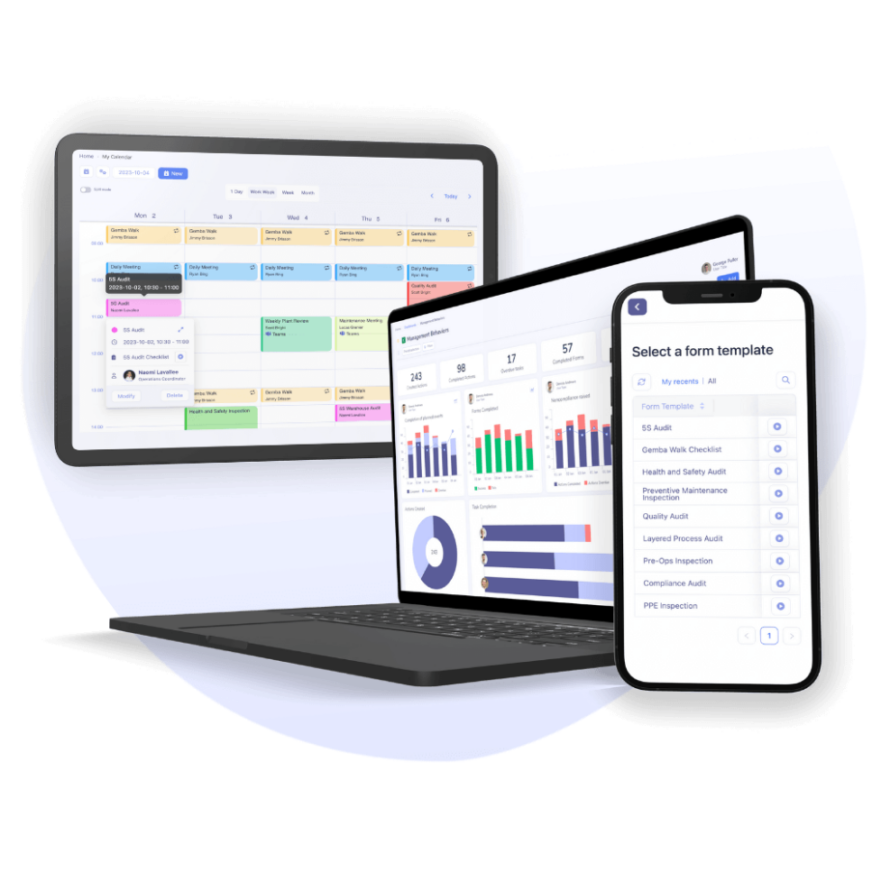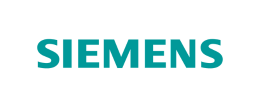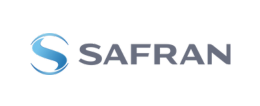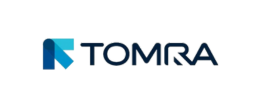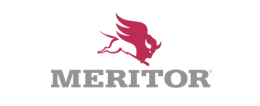5S Lean Manufacturing: Step-by-Step Guide to Improve Efficiency

| Audience: | Manufacturing Managers, Healthcare Administrators, Operational Excellence and Lean Management Practitioners, HR Coordinators, Organizational Leaders |
| Last updated: | June 26, 2025 |
| Read time: | 4 mins |
- Implement the 5 steps: Sort, Set in Order, Shine, Standardize, Sustain.
- Reap the benefits: Reduced waste, improved safety, increased productivity.
- Boost employee morale: Create a more engaging and satisfying work environment.
What is 5S Lean Manufacturing?
5S is a powerful lean manufacturing methodology used in factories, plants, and various industries such as healthcare and distribution to optimize workspace organization, boost productivity, and create a safer work environment.
By implementing 5S principles, organizations can achieve a clean, well-ordered, and disciplined workplace where every workstation is conducive to efficiency and safety.
This article provides a comprehensive guide to 5S, exploring its five steps, benefits, and how Tervene can help you implement it effectively.

5S: The Origin of a Lean Manufacturing Pillar
The 5S methodology traces back to Toyota‘s factories, where Takashi Osada conceived it to enhance production line efficiency. Over the past three decades, 5S initiatives and Lean manufacturing have gained global traction and helped many industries unlock their full potential.
Why Implement the 5S Method
In production settings, a prevalent issue is the loss of time resulting from inadequate workstations, inefficient tool retrieval, and inconsistent equipment storage. This disorder leads to decreased work speed, lower production rates, quality issues, and safety hazards. Key problems include:
- Cluttered workstations.
- Suboptimal workstation layout and ergonomics.
- Frequent searches for misplaced equipment.
- Need for clearly defined or posted procedures.
- Delays caused by shared tools among workstations.
- Presence of unnecessary or unsuitable tools in the workstation.

Benefits of the 5S Method
Waste presents a significant challenge to manufacturing businesses and it requires as much limitation as possible. The implementation of a 5S workplace offers various benefits, including:
- Reducing the risk of workplace accidents.
Cutting down on wait times and delays. - Preventing unnecessary handling and movement.
- Fostering a productive work environment.
- Enhancing employee comfort.
- Streamlining workflows.
- Eliminating production line bottlenecks.
- Achieving operational excellence.
5S in Lean manufacturing has a double strategy: improving operational efficiency and human resource management. This approach makes it possible to engage in a continuous improvement process.
5S Steps
-
- Seiri – Sort
-
- Seiton – Set in Order
-
- Seiso – Shine
-
- Seiketsu – Standardize
-
- Shitsuke – Sustain

Seiri – Sort
In the initial stage of the 5S methodology, the focus is on decluttering the workspace by removing anything unnecessary or redundant. Close collaboration with the employees at the relevant workstations is crucial during this phase. Through their active involvement, you can effectively organize the tools and check that everything is present.
Seiton – Set in Order
The next step is organizing after streamlining each workstation to its core elements. It’s not merely about creating an aesthetically pleasing workspace; it’s about optimizing time efficiency. When specific tools need to be used in a particular sequence, this phase presents an ideal chance to arrange them within easy reach, in sequential order, and clearly label their positions. This anticipation minimizes the time spent searching for tools, reduces delays, and minimizes employee movement and fatigue.
Seiso – Shine
Maintaining cleanliness at every workstation is crucial to serve the dual purpose of minimizing health hazards and optimizing production efficiency. Establish a cleaning schedule and provide easily accessible trash bins at every workstation. Keeping tools and machines clean and well-maintained enhances the efficiency of handled materials. Likewise, by regularly inspecting equipment for proper functioning, the risk of work interruptions is significantly reduced.
Seiketsu – Standardize
Starting a 5S project is all good, yet integrating the actions into the organization’s ongoing routines is necessary to expand its effectiveness. This step underscores the significance of standardization. Employees cultivate productive habits by making workstation cleanup a daily ritual, no longer seeing this step as redundant. Incorporate cleaning and tidying into the regular schedule to clearly define the desired frequency and communication tools needed to meet your objectives.
Shitsuke – Sustain
Over time, the effectiveness of the process may decline. Therefore, the last phase of the 5S cycle emphasizes consistent monitoring. This monitoring identifies potential procedure deviations to enable swift corrections and continuous improvement of 5S practices.
It is recommended to conduct regular 5S audits with checklists (weekly or monthly) to uphold established standards and ensure teams consistently follow 5S principles. Additionally, periodic meetings of the 5S project committee are valuable for supporting existing initiatives, arranging employee training, and analyzing 5S outcomes.
With Tervene’s mobile audits, you can find out whether your 5S project is effectively deployed thanks to its mobile audits.

Involving workers and technicians in the process is crucial. These changes directly impact them, and their input is invaluable. Neglecting to secure their support when implementing optimizations can lead to counterproductive outcomes.
The 5S Method’s Tangible Benefits
5S and Workflow
Machine breakdowns in a factory disrupt the production process. Whether it’s chocolate, car engines, computers, or plastic bottles, when a machine fails, it leads to hours of lost productivity and significant financial losses. The 5S methodology incorporates routine machine checks into its cycle to ensure preparedness. Dedicating just 5 minutes daily to equipment analysis and workstation optimization can save substantial time and effort.
5S and Well-Being at Work
While the primary aim of the 5S process is to enhance factory productivity, it goes beyond that by prioritizing worker well-being and continuous improvement of their working conditions. This human management benefit includes organizing workstations to minimize unnecessary movement and effort for each employee.
For instance, if a worker needs to take multiple steps every few minutes to access a tool from a cart, the cumulative time and energy expended throughout the day becomes a significant factor. Simple adjustments, like placing a tool within arms reach, reduce friction and optimize workflows.
Simplify Shift Handovers With 5S
Standardization relies on visual cues in the fourth step of the 5S process. These may include tool illustrations placed in designated areas and exhaustive process documentation. Offer clear day-to-day reference points for workers and enable seamless rotation. Whether a worker is temporarily or permanently absent from their workstation, thorough documentation ensures that newcomers can quickly take the correct actions upon arrival.
Lean Manufacturing, a key element of continuous improvement, is increasingly influencing production lines. A well-planned 5S project can help you achieve new milestones by effectively enhancing working conditions and plant productivity. Tervene’s application provides digital 5S audits to assist your efforts.
FAQ: 5S
5S is a systematic approach to workplace organization that aims to reduce waste, improve efficiency, and enhance productivity. It originated in Japan as part of the Toyota Production System and has since been adopted by organizations across various industries.
The 5S methodology consists of five steps:
- Sort (Seiri): Eliminate unnecessary items from the workplace.
- Set in Order (Seiton): Organize remaining items for efficient access.
- Shine (Seiso): Clean the work area and equipment.
- Standardize (Seiketsu): Create standards for maintaining the first three steps.
- Sustain (Shitsuke): Maintain discipline and continuously improve 5S practices.
Implementing 5S can lead to:
- Reduced waste
- Improved safety
- Increased productivity
- Enhanced quality
- Increased employee morale
- Continuous improvement
- Start with a pilot project: Choose a small area or team to implement 5S initially.
- Get employee buy-in: Involve employees in the process to ensure their support and participation.
- Provide training: Educate employees on the 5S principles and techniques.
- Use visual management: Use visual cues like labels, signs, and color-coding to maintain organization.
- Conduct regular audits: Monitor progress and identify areas for improvement.
Technology can play a crucial role in supporting 5S implementation. For example, Tervene offers digital solutions for:
- Conducting 5S audits: Use mobile apps to perform audits, capture data, and track progress.
- Standardizing procedures: Create and share standardized procedures and checklists.
- Sustaining 5S practices: Use daily management systems to monitor performance and drive continuous improvement.
Tervene provides a suite of digital solutions that can help organizations implement and sustain 5S practices effectively. These solutions include:
- Mobile audits: Conduct 5S audits using mobile devices, capture data, and generate reports.
- Leader standard work: Define and track standardized work processes for leaders to ensure consistency.
- Daily management system: Monitor key performance indicators, identify areas for improvement, and track progress.

